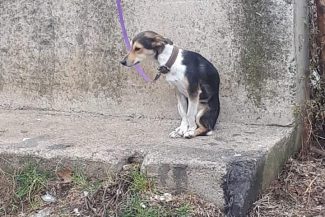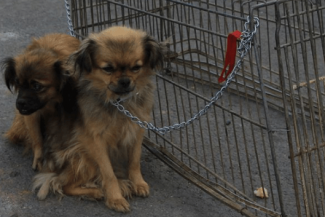Before we list our comments on the points mentioned, we would like to thank them both, for the ethical and humane approach they expressed during the conversation about stray dogs. We thank them for wanting to see the dogs well and also to enjoy a life of peace in the society in Kosovo. As much as we share the desire with them, we also work every day, precisely on and for these topics and we are realizing day by day, that it is not so easy to implement our utopian desires for humane and ideal treatment of either human or non-human animals. We also hope that their enthusiasm to address this topic will not remain so, but that they and all other media will engage, to put pressure on the responsible institutions to solve this problem in the most effective and humane way possible.
The conversations and points that were emphasized by the guest Mrs. Nushi-Muhaxhiri and the moderator Mr. Kreshnik Berisha, were not completely accurate and the citizens need to understand this situation better and more correctly, rather than have a conversation that leans towards the black & white view in regards to the discussed problem. That’s why, we are adding some colors to this disccusion, in order to better inform you about the points that the journalists talked about in the TV studio.
Our comments on the topics covered by journalists:
1. “All those who have been attacked by stray dogs are people who love dogs”
This comment from Mrs. Nushi-Muhaxhiri, said with such certainty, even though it takes into account only two cases, out of dozens that have happened so far, does not represent the reality of the situation. The journalist’s comment was also that people (animal protection activists, we believe she meant) respond to her with the excuse “you have harassed the dogs, so they are attacking you”. We do not know where the source of this information comes from, but if Mrs. Nushi-Muhaxhiri were to research a little deeper, she would come across dozens of articles of our organization on this topic, which we deal with every day and work to help institutions to create a permanent solution to this issue. Therefore, it is quite unprofessional to take as a basis “sayings” or “Facebook comments” that some people may even believe, that ‘only’ if they harass dogs, they attack. But perhaps the journalist has selected only the comments of some, those who support her opinion, without fully understanding that dozens of articles of our organization say that: “bites in most cases come as a result of harassment of people in general.” Our organization constantly says in the media that “innocent citizens are bearing the consequences of the bites” and this is really worrying for everyone, because we as a community for the protection of animal rights, live in this country as well. We do not live outside the borders of Kosovo. Therefore, to say in a TV show that “some people and some groups are saying that the people being attacked at the moment, were attacking the dog”, is quite superficial. There are activists who deal professionally with this topic, with the capacities they have, at the highest institutional levels. In fact, the comments of the people mentioned by the journalist do not represent the opinion of all animal protection activists. In fact, those thoughts are a minority, as even in the animal-loving community there are professional people who understand very well the behaviors of dogs, and the reasons that lead to their aggression.
Dogs are animals that are accustomed to humans. If one approaches dogs with more courage (with a lot of self-confidence) and shows aggression and abuse towards them, dogs immediately recognize that aggressive person as dominant and do not necessarily harass him or people who are not afraid, but often also from the experiences we have in Kosovo, it’s people who are scared or weaker than them (dogs), which are often the children, who are attacked. This is the case when dogs bite out of fear and trauma of abuse by other people. In some cases, when a person is not as confident as the previous abuser and confronts previously traumatized dogs and tries to attack them in self-defense, there is a risk that the dogs will bite that individual because they feel fear and threat from the person who is hypothetically attacking them. These are cases where people who were harassing dogs are also attacked by them.
Dear Kreshnik, dear Paulina, every day we see incidents between people and totally innocent animals, who are quiet in their sleep and are attacked by people, for which the circumstances and conditions of the moment, is totally unnecessary. So, of course, there are times when people are attacked by dogs, because it was those people who were trying to harass them. But it can not be said that the animal protection community thinks 100% that “dogs attack in the spur of the moment, only because of the imminent attack by someone”.
Dogs also attack when they want to defend their territory. They make the territory where they are fed en masse (garbage in every corner of Kosovo) and often animal protection activists, who feed them in inadequate places (we also criticize this and we have often said this in interviews on TV shows). If in their territory, from an early age, they are kicked, if people constantly (out of fear or malice) attack or intimidate them, if they are not neutered in early age (7-10 months), nëse nuk sterelizohen qysh në moshat e hershme: 7-10 muaj [affects testosterone in neutered dogs that are still young, because during the age of 7-10 months they still do not create a dominant and “fighting” character (not in all cases) if they are only traumatized or previously harassed; in females, sterilization from 7 months of age reduces the chance of first reproduction (not in all cases)], dogs will be ready to attack. Sterilizing bitches should be a priority to reduce the number of dogs bred in the country, with other necessary measures, which we will explain below.
2. “Other municipalities are bringing stray dogs in Prishtina”
We as an organization make numerous visits to veterinarians and their work during state projects of castration / sterilization of stray dogs and in some cases we have encountered this very negative phenomenon, the transfer of dogs from one municipality to another. However, this phenomenon does not happen constantly (it happens more during state castration and sterilization projects, because even dog catchers that usually send dogs to veterinarians for surgery are paid for by the responsible veterinarian) and is not the only factor.
It is a little surprising how even after the research of Mrs. Nushi-Muhaxhiri, the main factors of growing population of stray dogs on the streets were never mentioned, which are the numerous abandonments that occur in Kosovo. How do we know this? Many people do not neuter their dogs and often even breed them with other dogs, either stray or arranged for breeding. When dogs give birth to puppies, not all puppies can be kept by Kosovar families. Often the mother and puppy themselves are thrown on the street. We know this from the many rescue cases and from many volunteer activists. We have also encountered many experiences on the ground and from the Facebook pages of young people breeding dogs for fights. They keep the dogs in abandoned houses, where they are constantly bred. Many of these animals also end up on the streets.
Animal markets are overcrowded with puppies and dogs. Most puppies, if not sold for several weeks, end up on the street. Fushë Kosova is very crowded with dogs, precisely for this reason. This is what a seller himself has told us and if a person does this, rest assured that there are many more who abandon dogs that are not sold for long.
Moreover, every two weeks we see new births and little puppies on the street. Most puppies die from many factors and only a few survive. Now, you are probably thinking to yourself: “If they had shelter, they would survive”, right? We will explain later why shelters are not a sustainable and effective solution, for the current situation.
3.“I believe neutering/sterilization is being done in Kosovo”
Dear Mrs. Nushi-Muhaxhiri, when dealing with the research of the stray dog situation in the country, you can not say “I believe it is happening”. You need to know exactly what work was done with the citizens’ money in the state projects of CNVR (Catch, neuter, vaccinate, release) that was managed by the Kosovo Food and Veterinary Agency (KFVA), during 2018 and now during 2020. Have you ever requested a report from the FVA for the work of veterinarians throughout the state project? Because since you are only ‘believing’ that they are being sterilized, we can tell you for sure, because we are directly involved in monitoring these projects, with so many opportunities that we have had, because the KFVA has made our work very often, very difficult. They simply did not like the fact that we criticized their unqualified veterinarians (not all) especially during 2018, who were very little transparent and too many irregularities were found. Very soon we will publish the report for this project, because we have asked the KFVA (with the help of the Ombudsperson) to submit all data and work reports of veterinarians in 2018. The KFVA stated that 14,000 dogs were treated (including the number of euthanased dogs) while from the data we received from the KFVA, there are only about 7,000 treated dogs. Not more. The KFVA either did not want to provide us with the complete data or did NOT have ANY report on the work of the Ferizaj and Gjilan Region.
When we say the project of 2018 and 2020 – do not think that they are continuous 1-year projects. No. In 2018 the project lasted from May – November 2018 (with breaks in between) and in 2020, it started from May and now almost all the winning veterinary subjects have finished their work in this project. This means that if this year, KVFA no longer receives funding from the Government, during this period until next year, dogs will have even more room for breeding on the streets. Several CNVRprojects were active in these municipalities during 2019: Suhareka, Fushe Kosova, Prizren, Prishtina, Gjilan. We requested the data (work reports) of veterinarians in all municipalities that worked in 2019 and the result was:
- From Prishtina – poor and partial work reports of the Center in Harilaq; No photos were submitted and reports were very poorly written.
- Suhareka – we received photos and reports from the veterinarian J.K. contracted in 2019. There were no major irregularities but the budget was very small and only a few dogs were treated.
- Fushe Kosova – we are in contact with the vet. He has received a 3-year contract, but very little funding from the Municipality of Fushe Kosova. We constantly try to put pressure on the institutions, not to forget to plan a long-term project, and with the necessary funds for the treatment of dogs in every municipality in Kosovo.
- Prizren – written reports have been submitted to us, but no photos. We have no evidence that the veterinarian contracted at the time F.K. worked exactly as reported. Our institutions are very generous in paying veterinarians. They do not need to report much, although, in some aspects, we have managed to change this in the emergency CNVR project in Prishtina in 2020 during the time of the pandemic, and in the state project of 2020. We have constantly proposed Municipalities, more strict measures of monitoring. With strict monitoring, effective work would be achieved.
KFVA has made very few monitoring visits during 2018. We have made over 100 visits in 2018, dozens of visits during 2019 and over 130 visits from April 2020 until now.
These visits, dear Mrs. Nushi-Muhaxhiri and Mr. Berisha, are made precisely to ensure prudence in the responsible institutions in Kosovo, so that then they will be able to manage a utopian shelter, which you are describing so easily: “where dogs would be treated well, where they would be happy, where people come to adopt them ”. Yes, ladies and gentlemen, we dream of this as well, day and night. But to work for a better life of stray dogs, in eventual state and private shelters, is quite difficult and a long way away, especially with the political and professional level of our responsible institutions throughout Kosovo and the lack of social awareness in respect for animal welfare.
Monitoring visits, are conducted by us with the purpose of making sure:
- dogs are treated humanely (we still have to convince veterinarians that it is not ‘shameful’ to treat dogs humanely and professionally);
- no frauds are being made with the number of dogs reported as being treated while in fact they are not being treated at all. If fraud is commited with the reported numbers, it means that stray dogs will continue to breed and citizens think that state projects are active.
Many citizens have contacted us to mediate between them and veterinarians contracted for CNVR projects, because veterinarians contracted by the state, often know to be unprofessional and arrogant. That means, that veterinarians, whose jobs get compensated with citizens taxes, neither respond to you (not all) politely nor listen to you when reporting any aggressive dog.
You may ‘believe’ that they are being sterilized, but we are telling you that:
- the actual work of veterinarians and the number they report is not yet clear and
- even if a larg number of dogs would be neutered for a 5 month contracting period, in a one year project , but then the project pauses for more than 6 months, we will have a huge number of new births on the street. This is what happened between 2018 – 2020.
4. “1.3 milion”
This project is finished. This money was used for treating 14,000 dogs during 2018, as we were told by KFVA.
The state must dedicate special amounts of money each year for CNVR projects, which should be active all the time. Because dogs would be treated with neutering/castration; and sick dogs and aggressive dogs would be taken off the streets.
Many animal protection activists try to make some spaces, which they call shelters but which are not at all adequate spaces for keeping dogs because they do not have the neccessary space, funds and management skills to run a shelter with all the programs required to have a transitional shelter (until adoption). Although, many shelters in Kosovo (all private, somewhere around 13 that we know so far) with foreign activists, of the Kosovar diaspora, or even local activists, have managed to find good families, for hundreds of stray dogs of Kosovo.
These activists, who are being criticized so much by so many people, are the ones who keep hundreds of dogs off the streets and on the way of being adopted outside Kosovo. And you have the courage to say that those who really love dogs would like to shelter them? This is exactly what they are doing, dear Mrs. Nushi-Muhaxhiri.
5. “Citizens are raising suspicions regarding the work of sterilization”
During the interview, Mrs. Nushi-Muhaxhiri, believes that veterinarians have performed sterilization and castration throughout Kosovo, which means, that she doesn’t possess accurate information about this project. But the question is, why did not you ask us, that we have accurate facts of work in 2018-2020 of state projects? Apparently, citizens can express their opinion, but people who are working every day on these issues should not be asked?
Yes, dear Paulina, even though sterilizations are being done, the number of stray dogs is growing. We have explained the reasons in point 3.
6. “In the Prizren square, there are no more resident dogs and other dogs are appearing”
If you had analyzed the phenomenon of dog extinction from the point of view of poor dogs, you would understand that stray dogs are victims themselves, because somehow they are cruelly disappearing from the street, because they are taken by veterinarians, neutered, sterilized or abused during operation by negligent and non-professional veterinarians and as you both confirmed during the interview, are often taken from one place and released in another place, where then problems may arise because they are in a new and unknown territory to them. Do not you find these issues important enough to ask questions?
It’s a very simple math. There are so many irregularities in state projects and you still think that the life of dogs in these hypothetically built shelters, during this time period, would be humane for dogs? Do you know for sure that the dogs will be happy and well treated in all aspects in these shelters? Because Mrs. Paulina sounds very confident.
7. “Shelters”as a concept
The concept of permanent dog shelters (until adoption), in Kosovo, is a ‘very optimistic and very distant concept for a country like Kosovo. Why do we say that? From the fact that in order to come to effective and sustainable shelter of dogs some other legal steps need to be taken.
If today one or more shelters are built in Kosovo, where hundreds of dogs would be sheltered (even though our state does not have sufficient capacities to provide adequate conditions for dogs in shelters), we would still have dogs on the streets, because we have not solved the problem from its source.
As long as dogs with keepers (owners) are not identified and registered, and the same are not punished under applicable law, for abandonment and abuse of their animals, the problem of growing number and breeding of stray dogs will always be present. Also, there are many cases where dogs are also lost, and in the absence of identification, often remain on the streets and are not found by their keepers (owners). These dogs, the vast majority of which are not neutered, breed with other stray dogs, thus increasing the number of their population.
So, at the moment, the idea of shelters in Kosovo is extremely unattainable. Our state simply does not have the professional or financial ability to solve the problem of stray dogs through shelters. Keeping dogs in shelters has extremely high costs, and requires the commitment of professional dog care staff. Keeping them in shelters until their natural death greatly endangers their well-being, in the current situation in which we find ourselves.
Here is a study, which shows how the Netherlands has solved the problem with stray dogs. We ask for this and we work to make it happen in Kosovo as well. Without implementing parallel programs such as: changes and legal implementations (penalties, ban on breeding), CNVR, social education and shelter – the situation can not be resolved properly.
Some photos from two municipal shelters (Gracanice and Peja), in the past:
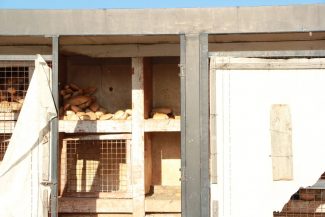
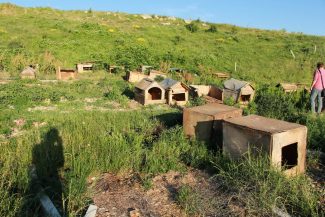
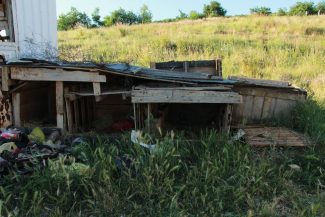

How a shelter should look: https://animalrights-rks.org/shelter-for-temporary-stay-in-switzerland/?fbclid=IwAR0tcSfmOXeByDiK-825LCxZmu8IqsXDn83wgHdB6TdsAoGf08CDqxeZ33Q
* In developed countries, shelters are maintained at the expense of those who abandon or bring animals to shelters, or by donations from animal lovers. Also, in developed countries, where there are shelters such as the one you are asking for, stray animals are not sheltered, because there are no stray animals (due to the full implementation of legislation for responsible keeping of companion animals), hence the number of animals in shelters of developed countries, is smaller.
8. “Prishtina Municipality Shelter” – Temporary Care Center that will be built in Prishtina
The Municipality of Prishtina may have called the Temporary Care Center (TCC) a shelter, but we are telling you again after many of our statements that in this TCC there will be no permanent shelter for dogs, but the TCC will perform services according to administrative instruction 04/2017 (MAFRD). It means the center will serve as a veterinary clinic for the humane treatment of stray animals. The TCC, planned by the Municipality, has only about 50 places for temporary accommodation of stray animals.
We are sorry that the Municipality continues not to tell the citizens correctly!
9. Two groups of people exist: Those who say that “dogs don’t bite” and those who say that “dogs bite”
This is not true.
There aren’t only two groups. The other groups that you have no knowledge of or did not want to mention are those groups that are trying their best to resolve the situation comprehensively and consistently. Then we also have a lot of activists who are enabling the adoption of stray dogs over and over again. Why did you skip these other two groups? Because their job is much more complex and difficult and most people just want beautiful ideas and ideal shelters where dogs would be housed, with no one then interested in how the dogs life would be in those hypothetical shelters.
You may think now and say, “Yes, they do not have a good care in the streets either.”
This is true, even on the streets they do not have a good life. Therefore, we demand proper implementation of state projects and legal changes to stop the abandonment and breeding (in the absence of sterilization and castration) of stray dogs (animals). Their systematic and mass imprisonment in Kosovo, consciously, extremely endangers the welfare of animals and sets a dangerous precedent of mass killings of dogs, because the number of the dogs in the streets is larger compared to the financial and professional capacities that Kosovo has. Therefore, we urge citizens to accept stray animals as members of the community by treating them well – and in the case of dogs that endanger human life, whether from a zoonotic disease or the persistent aggression, to be taken by economic operators (veterinary entities) contracted either by the state or by the Municipalities, and to take them off the street in order not to endanger public health and safety.
The problem is that neither the Municipalities nor the KFVA itself are implementing ongoing CNVR projects (capture, neuter, vaccinate, release) so that dogs do not breed on the streets and that aggressive dogs are identified and removed from the streets, after eventual attacks.
Why don’t we ask for these measures to be implemented, before calling for their imprisonment?
We, as an organization, are in favor of their dignified sheltering, where their well-being would be fully ensured, however, before sheltering dogs, the growing and breeding of stray dogs must be stopped. And for that, you as journalists can help and not see this situation by portraying “two groups of people”.
10. “In Magure, dogs with eartags are release on the street”
The caller from Magure, who complained that the dogs with eartags were being released in the street, did not receive a proper explanation from you. As mentioned above, in the state treatment project through the CNVR, the treated dogs must be returned to their territory after treatment. Treated dogs are identified with eartags. Veterinary entities order different eartags, with different colors, with a unique identification number, which are reported to the KFVA.
It should have been explained to the caller, why the dogs are back on the street, with eartags in their ears. He and many other citizens do not have information about the project procedures, because they are not and never were, informed by anyone (although state funds have been allocated for information and awareness of citizens worth 111,000.00 euros – but that no awareness activity has ever been organized by the company contracted by KVFA). Since Mrs. Nushi-Muhaxhiri is researching on this topic, we invite her to be better informed. Our door is always open for anyone interested in this topic.
We are also very concerned that a journalist publicly says that ‘there is no evidence’ of veterinarian abuse during CNVR state projects. If Mrs. Nushi-Muhaxhiri did a proper research on this topic as she is claiming, on the Facebook page and website of our organization she would find countless facts about the abuse of veterinarians with stray dogs. Therefore, it is surprising how Ms. Nushi-Muhaxhiri speaks with such certainty that there is no evidence for this. For this part as well, we invite the journalist to research properly, and not to come up with half-hearted statements. For the sake of humans and animals.
Few facts:
https://animalrights-rks.org/threat-towards-vets-and-our-team/
https://animalrights-rks.org/ethics-commission-of-the-veterinary-profession-is-not-doing-its-job/
https://animalrights-rks.org/kfvas-favourite-vet-doesnt-need-accountability/
https://animalrights-rks.org/lack-of-cooperation-from-the-veterinary-entity-goni-in-ferizaj/
https://animalrights-rks.org/the-attempt-of-some-veterinarians-to-hide-their-real-work/
https://animalrights-rks.org/suspicions-of-veterinary-abuse-on-stray-dogs/
https://animalrights-rks.org/kfva-must-manage-the-situation-with-stray-dogs/
Finally, we would like to thank you both again for the willingness to give you as a media your contribution to long-term solutions to this problem, because we think that the media have an important role in solving this problem, whether raising public awareness of the real situation of the stray dogs and sources of the problem, whether through media pressure on institutions for professional engagement to find a long-term solution, as long as these topics are treated professionally, including people or organizations/institutions who are involved professionally every day to come to a lasting solution of the problem of stray dogs.
We invite Mrs. Nushi-Muhaxhiri and Mr. Berisha, but also other journalists, to contact us at any time for detailed information about this much talked about topic, since from 2018, with the capacities we have, we actively deal with this topic institutionally, legally and through monitoring field visits.

